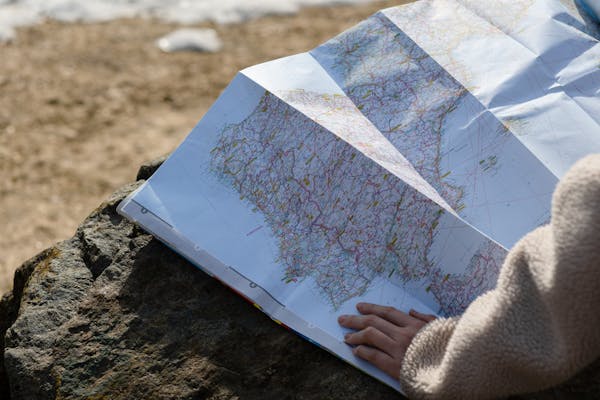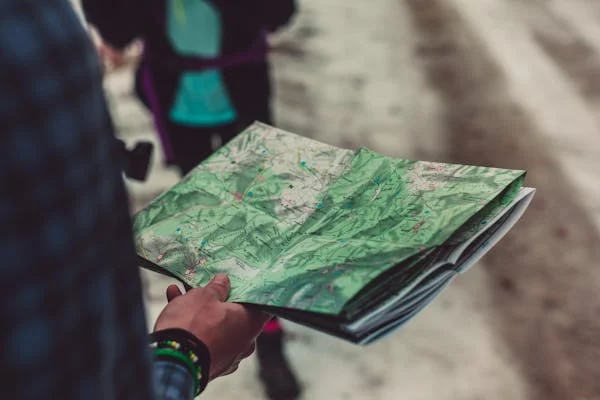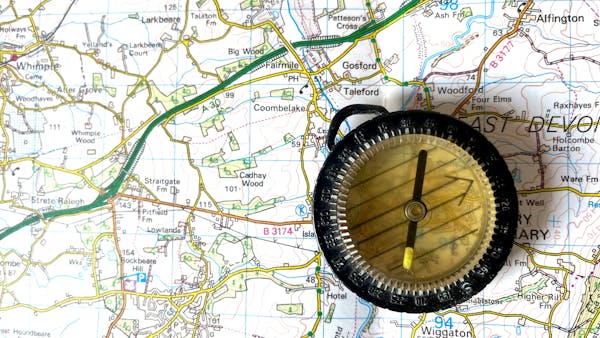Tips for navigating difficult terrain while hiking. A Complete Companion. Hiking can be a stirring way to connect with nature, but grueling terrains like rocky trails, steep pitches, and muddy paths bear specific chops and ways. Navigating delicate terrain while hiking safely and efficiently involves proper medication, mindfulness, and ways to avoid injuries. This companion provides tips for navigating different types of delicate terrain, making hiking safer and more pleasurable.
1. Understanding the significance of Footwear for Navigating delicate Terrain
Choosing the Right Hiking Thrills
Having the right footwear is pivotal for diving into delicate terrain. Hiking thrills with sturdy soles and good ankle support help slips and give stability on uneven shells. Make sure your thrills fit well to avoid pocks, and choose a brace that’s leakproof to keep your bases dry in wet conditions.
Benefits of Using Touring Poles
touring poles are precious for maintaining balance on grueling trails. They help reduce the strain on your knees during descents and give fresh support on steep climbs. Acclimate the length of your poles grounded on the terrain, keeping them shorter for uphill sections and longer for upwardly.
2. ways for Navigating Steep pitches and Loose Gravel
How to Climb Steep Slopes Safely
When climbing a steep pitch, keep your body leaning slightly forward and take a small way to maintain balance. Using the balls of your bases can help grip the face more, especially if the ground is loose. Tips for navigating difficult terrain while hiking. Rely on touring poles or use your hands for fresh support on particularly steep sections.
Tips for Descending on Loose Gravel
Descending steep trails with loose clay requires a conservative approach. Bend your knees slightly to lower your center of graveness, and take a shorter way to ameliorate stability. However, shift your weight onto your heels to decelerate down and recapture control, If you start to slide.
3. Navigating Rocky Terrain Maintaining Balance and Safety

Using Three Points of Contact
When hiking on rocky terrain, try to maintain three points of contact with the ground at all times. This could be two bases and one hand, or one bottom and two hands, which helps give stability and prevents falls. Move cautiously and plan each step to avoid slipping.
Feting and Avoiding Loose Rocks
Look out for jewels that appear unstable or aren’t bedded in the ground. These can shift underfoot and cause you to lose your balance. Step on larger, more stable jewels and avoid jumping from gemstone to gemstone, as this can increase the threat of twisting an ankle.
4. Crossing Aqueducts and Wet Terrain Without Slipping
opting for the Right Crossing Points
Choose a spot where the sluice is narrow and shallow for easier crossing. Look for stable jewels or logs to step on, and use touring poles to test the stability of each one before stepping. Tips for navigating difficult terrain while hiking. However, wade through the water sluggishly while using the poles for balance, If no stable shells are available.
Precluding Slips on Wet Rocks
Wet jewels can be incredibly slippery, so take redundant caution when crossing them. Wear hiking thrills with good traction, and avoid stepping on mossy or algae-covered jewels, as they tend to be veritably slick. However, do so sluggishly and use touring poles for fresh support, If you must step on a wet gemstone.
5. Tips for Hiking Through Muddy and Slippery Trails
Maintaining Balance on Muddy Paths
On muddy trails, use a wider station and shorter way to maintain stability. However, stop to scrape it off, as it can reduce traction If your hiking thrills get crusted in slush. Stick to the sides of the trail if the middle is too slippery, as the ground may be firmer.
Using Gaiters to Keep Bases Dry
Gaiters are a useful accessory for keeping slush and water out of your thrills. They cover the lower part of your leg and upper charge, precluding humidity from entering. This is especially helpful when hiking through areas with deep slush or shallow aqueducts.
6. Navigating thick timbers and Bushy Terrain
Chancing the Trail in Grown Areas
When navigating thick timbers or bushy terrain, keep an eye out for trail labels or signs to avoid getting lost. However, look for worn patches of ground, fraudulent lawn, If the path is unclear. Keep a compass or GPS device handy to stay acquainted.
Guarding Yourself from Scrapes and Insects
Wear long sleeves and pants to cover your skin from scrapes and nonentity mouthfuls when hiking through thick encounters. Use nonentity repellent to keep bugs at bay, and consider wearing a chapeau or head net if mosquitoes are current.
7. How to Deal with Altitude Changes While Hiking

Accommodating to Advanced mound
still, give your body time to adapt to avoid altitude sickness, If your hike involves significant elevation gain. Take regular breaks and hydrate constantly to help your body acclimate to the lower oxygen situations. Slow down your pace as you climb advanced to avoid overexertion.
Descending snappily If You Feel Symptoms of Altitude Sickness
Altitude sickness symptoms can include headaches, nausea, and dizziness. However, descend to a lower altitude as snappily as safely possible, If you start to witness these. Always listen to your body and don’t ignore advising signs, as severe altitude sickness can be life-changing.
8. Hiking in Hot and thirsty Conditions, Staying Safe
Staying Hydrated helps Heat prostration
In hot and thirsty surroundings, dehumidification can be snappily, so drink water regularly indeed if you don’t feel thirsty. Tips for navigating difficult terrain while hiking. Carry a hydration pack or water bottle and use electrolyte tablets to replace lost mariners. Wearing light-colored, permeable apparel can also help keep you cool.
Avoiding Sun Exposure and Heat-Related Ails
Wear a wide-brimmed headpiece, sunglasses, and sunscreen to protect yourself from the sun. Plan hikes for early morning or late afterlife to avoid the hottest part of the day. Rest in shadowed areas whenever possible, and avoid pushing yourself too hard in extreme heat.
9. The part of Weather in Navigating Delicate Terrain
Checking Weather Conditions Before Your Hike
Always check the rainfall cast before heading out for a hike, as unforeseen changes can make delicate terrain indeed more dangerous. Be set for rain, snow, or extreme heat, and bring applicable gear to handle these conditions. However, consider cataloging, If the cast is inimical.
Conforming Your Plans When Weather Changes Suddenly
Weather can change fleetly in mountainous areas, so stay alert and acclimate your plans accordingly. However, similar to a rainstorm rolling in, seek sanctum and stay for it to pass ahead continuing, If conditions worsen. Know when to turn back if the situation becomes too dangerous.
10. Using Navigation Tools to Stay on Track in Delicate Terrain

The significance of Charts, GPS, and Compasses
When navigating delicate terrain, it’s essential to have navigation tools like charts, GPS bias, and compasses. Indeed, if the trail is pronounced, these tools can help you stay acquainted in strange areas. Practice using them before your hike to ensure you know how to find your way.
Knowing How to Read Trail Labels and Signs
Trail labels and signs are there to guide you, so pay attention to them, especially in areas where the trail might split. However, check your chart or GPS to confirm the right direction, If you come across a chopstick in the path without signage. Avoid counting solely on technology; charts and compasses are precious backups.
FAQs About Navigating Delicate Terrain While Hiking
What Should I Do If I Get Lost While Hiking?
Stay calm and try to annul to a known point. Use your chart, compass, or GPS to find your bearings. However, stay put and signal for help using a whoosh or reflective gear, If you can not find the trail.
How Can I Help Slips on Wet and Muddy Trails?
Wear thrills with good traction and use touring poles for balance. Take a lower way to maintain control, and avoid walking on slippery shells like moss-covered jewels.
Is It Safe to Hike Alone on a Delicate Terrain?
Hiking alone can be parlous, especially on delicate terrain. However, inform someone of your plans, and carry a particular locator lamp, If you must hike alone.
Essential Gear for Navigating Delicate Terrain While Hiking
- Hiking boots with Traction: ensure your footwear has a good grip for different shells.
- Touring Poles: give balance and reduce impact on steep and uneven terrain.
- Gaiters: cover against slush, snow, and water.
- Navigation Tools Charts: GPS and compasses are pivotal for staying on track.
- Water sanctification: Carry tablets or sludge if you need to refill water on the go.
| Section | Key Tips/Strategies | Purpose/Benefit |
| 1. Use waterproof boots to keep your feet dry. | Choose hiking boots with sturdy soles and ankle support. | Prevents slips and provides stability on uneven surfaces. |
| Reduces the risk of blisters and discomfort in wet conditions. | Reduces risk of blisters and discomfort in wet conditions. | |
| Use trekking poles for balance. | Alleviates strain on knees and enhances support during climbs. | |
| 2. Navigating Steep Slopes and Loose Gravel | Lean forward and take small steps when ascending. | Improves balance and reduces the risk of falling. |
| Use waterproof boots to keep your feet dry. | Helps maintain stability on loose gravel. | |
| 3. Bend your knees and take shorter steps when descending. | Maintain three points of contact (e.g., two feet and one hand). | Enhances stability and minimizes risk of slipping. |
| Avoid loose rocks; step on larger, stable rocks. | Prevents loss of balance and potential injury. | |
| 4. Crossing Streams and Wet Areas | Choose narrow and shallow crossing points. | Reduces difficulty and risk when crossing water. |
| Wear boots with good traction; avoid slippery rocks. | Minimizes the chance of slipping on wet surfaces. |
Conclusion
learning the Art of Navigating delicate Terrain While Hiking
Practice and Preparation Lead to Success
Navigating delicate terrain while hiking can be a satisfying challenge. With the right chops, medication, and gear, you can attack indeed the toughest trails safely. Exercise different ways on varying terrains to gain confidence and experience.
Stay Informed and Adaptable for the Stylish Experience
Understanding the terrain, rainfall conditions, and limits will help you make informed opinions during your hike. Be set to acclimatize to changing circumstances, and always prioritize safety to make the utmost of your out-of-door adventures.
Navigating delicate terrain while hiking requires careful planning, the right gear, and awareness of your surroundings. Whether you’re dealing with steep pitches, rocky paths, or changeable downfall, following these tips can help you stay safe and enjoy your hiking experience to the fullest.


[…] Hiking Boot Lacing Techniques. The Ultimate Guide to Hiking Boot Lacing Ways to Improve Comfort and Stability. When it comes to hiking, having well-laced thrills is just as important as choosing the right footwear. Proper hiking charge lacing ways can help ameliorate comfort, help pocks, and give the stability demanded for diving different terrains. This companion covers a variety of lacing ways to suit different hiking requirements and bottom shapes, icing a more pleasurable and safe out-of-door experience. […]
[…] chart is an inestimable tool for both new and seasoned trampers. It offers detailed trail routes, difficulty situations, and points of interest. Before setting out, planning your hike with a chart can help you choose the […]